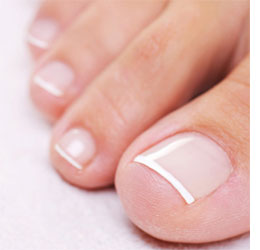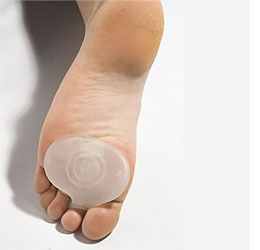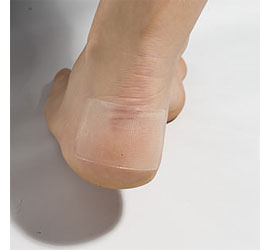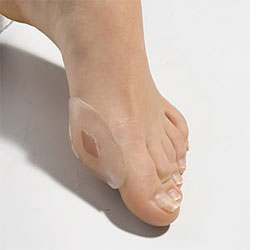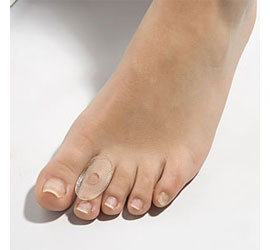The five most common foot problems
From eating better foods to getting an adequate amount of sleep and exercise, we're a very health-aware society. So why is it that many South Africans routinely overlook one of the cornerstones of good health?
From eating better foods to getting an adequate amount of sleep and exercise, we're a very health-aware society. So why is it that many South Africans routinely overlook one of the cornerstones of good health?
"Nearly eight in 10 adults have experienced some type of foot ailment in their lives. Yet despite the pain, close to three in 10 do nothing about it, simply choosing to live with their pain," says Dr. Michael King, a podiatrist. In a recent survey, more than half of those interviewed said they had endured foot pain at some point in their lives but have not sought treatment from a podiatrist."
So what are the five most common types of foot problems and what causes them?
Here are some tips from today's podiatrists:
• Nail problems are one of the most prevalent foot woes in both men and women.
These problems can range from ingrown toenails to fungal infections. Ingrown toenails - a condition in which the corners of sides of a nail dig painfully into the soft tissue of the nail grooves - is the most common form of nail problem.
To avoid ingrown toenails, trim nails straight across and don't dig into the corners.
Coming from a family that suffers from ingrown toe nails, I have found that by soaking in warm water with a few drop of tea tree oil added softens the toe nail and helps prevent infection. A technique that has been around for ages and works well for me, is to clip a small 'V' shape in the centre of the toe nail at the top. This reduces pressure on the sides. If you try this technique, only clip a small 'V' shape.
If a toenail becomes infected, see a podiatrist immediately for treatment. Those with diabetes, peripheral vascular disease and other circulatory disorders should seek a podiatrist's care on a regular basis to help prevent complications.
• Sweaty feet and foot odour are two foot conditions that are often experienced together.
While stinky feet are definitely embarrassing, feet that sweat excessively can lead to other foot problems, even creating an environment conducive to the development of athlete's foot. Closed shoes make feet sweat, but in the winter you can't avoid wearing them. Instead, practice good foot hygiene. Wash feet daily with soap and water, keep shoes and socks dry, and choose socks that wick away moisture. Change shoes and socks regularly and consider rubbing cornstarch or applying antiperspirant directly onto the soles of your feet.
• Pain in the ball of the feet
Nearly one-third of adults have reported pain in the balls of their feet.
Pain in this location can be caused by over-exertion, injury or ill-fitting shoes.
To avoid, always wear well-fitting, supportive and activity-appropriate shoes when walking, running or engaging in other physical activity. If necessary, replace the insoles that came in the shoes with ones that provide additional cushioning. Footwear is important and you should shop for the best budget running shoes.
• Heel pain
This type of pain can have many sources, including weight gain, excessive foot flattening, muscle imbalance, injury or even improper footwear.
To kick heel pain to the curb, always be sure to warm up and stretch properly before and after exercise. If wearing high heels, opt for heels that are no more than 4 to 5 centimetres in height.
For persistent pain, treatment can range from prescribed orthotic devices and medications to cortisone injections, physical therapy and rarely, surgery.
• Bunions
A bunion is an enlargement of the joint at the base of the big toe.
This bone deformation caused by the constant use of pointed shoes and high heels, although genetic predisposition plays an important role in its development.
Treatments range from self-remedies such as using a bunion pad around the bony prominence, to ice packs to reduce the swelling, and avoiding shoes that could irritate the bunion and even make the problem worse.
• Corns
This is a round, hard area of skin that is caused by pressure. The common causes of rubbing and pressure are tight or poor fitting shoes which tend to cause corns on the top of the toes and side of the little toe.
Also, too much walking or running which tend to cause calluses on the sole of the feet.
Corns are more likely to develop if you have very prominent bony toes, thin skin, or any deformities of the toes or feet which cause the skin to rub more easily inside shoes.
Hard corns commonly occur on the top of the smaller toes or on the outer side of the little toe. These are the areas where poorly fitted shoes tend to rub most.
Soft corns sometimes form in between the toes, most commonly between the fourth and fifth toes. These are softer because the sweat between the toes keeps them moist. Where soft corns form, care has to be taken with cleanliness, as these can sometimes become infected.
For persistent pain, see a podiatrist for a full range of treatment options.
"While foot problems are common, that doesn't mean people should be resigned to living with pain," King says. "Consulting today's podiatrist can help people feel better sooner, and get back to living healthier lives."

